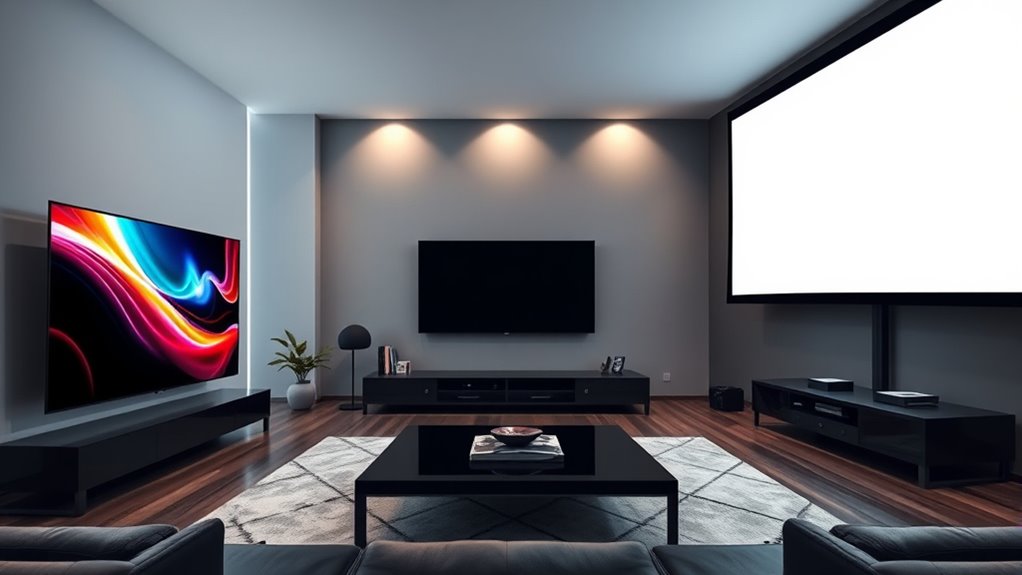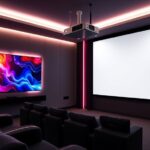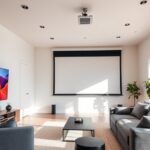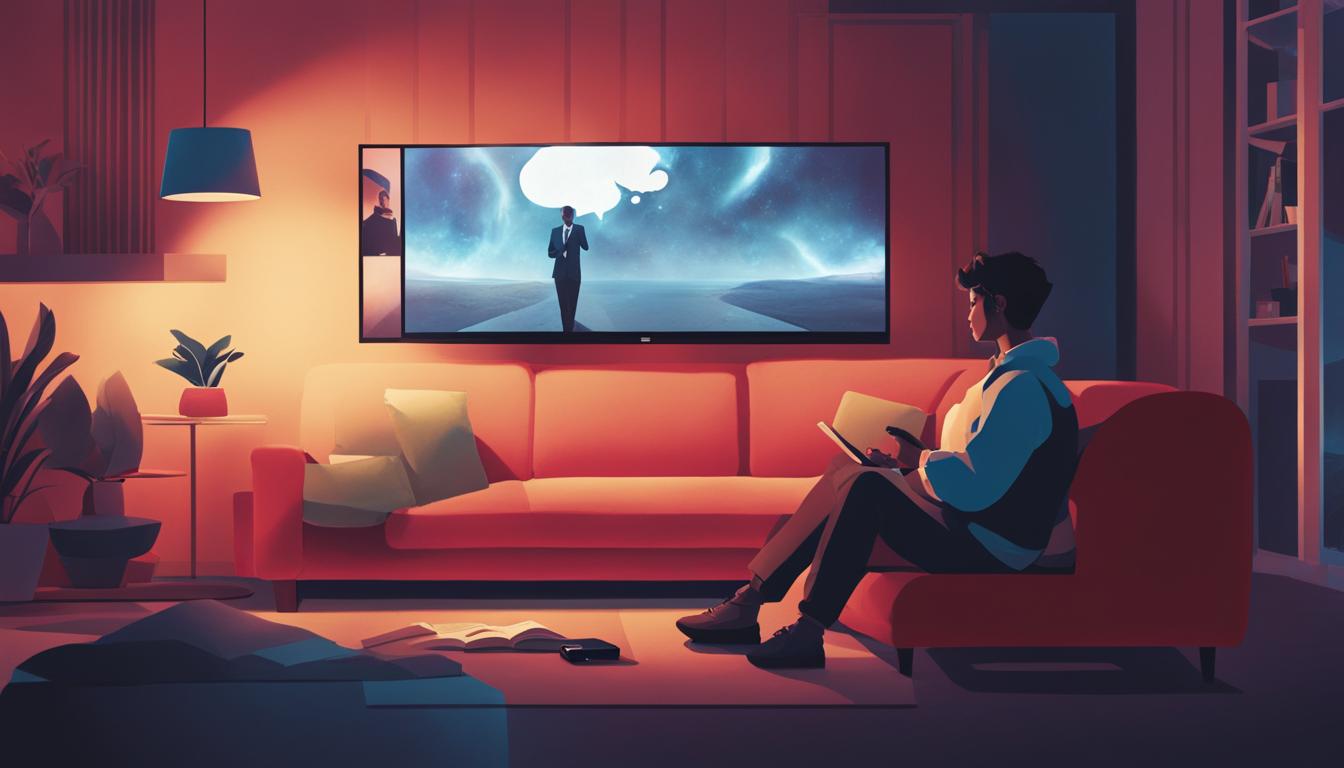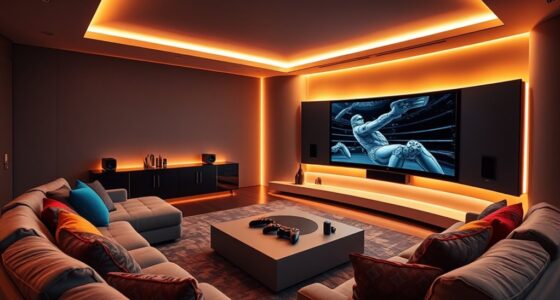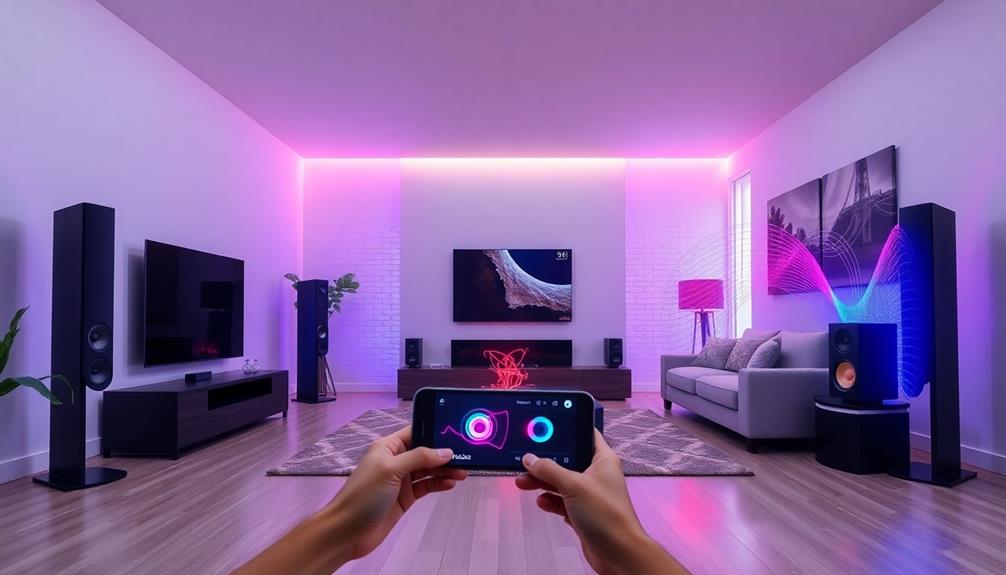For the best cinematic picture, an OLED TV offers vibrant colors, perfect blacks, and consistent quality regardless of lighting, making it ideal for most spaces. Projectors create larger images and a more immersive experience but require dark rooms and careful setup. Your choice depends on your room size, lighting conditions, and budget. Keep exploring to discover how each option can elevate your home entertainment to cinema-quality levels.
Key Takeaways
- OLED TVs deliver vibrant colors, perfect black levels, and consistent image quality in typical indoor lighting conditions.
- Projectors can produce large, cinematic screens ideal for immersive viewing but require dark rooms for optimal clarity.
- OLEDs are easier to set up with minimal space and adjustments, while projectors involve complex installation and calibration.
- For detailed, sharp images in standard rooms, OLED TVs excel; for grand-scale viewing experiences, projectors have an advantage.
- Budget and room size determine the best choice: OLEDs are cost-effective for smaller spaces, projectors suit larger, dedicated home theaters.
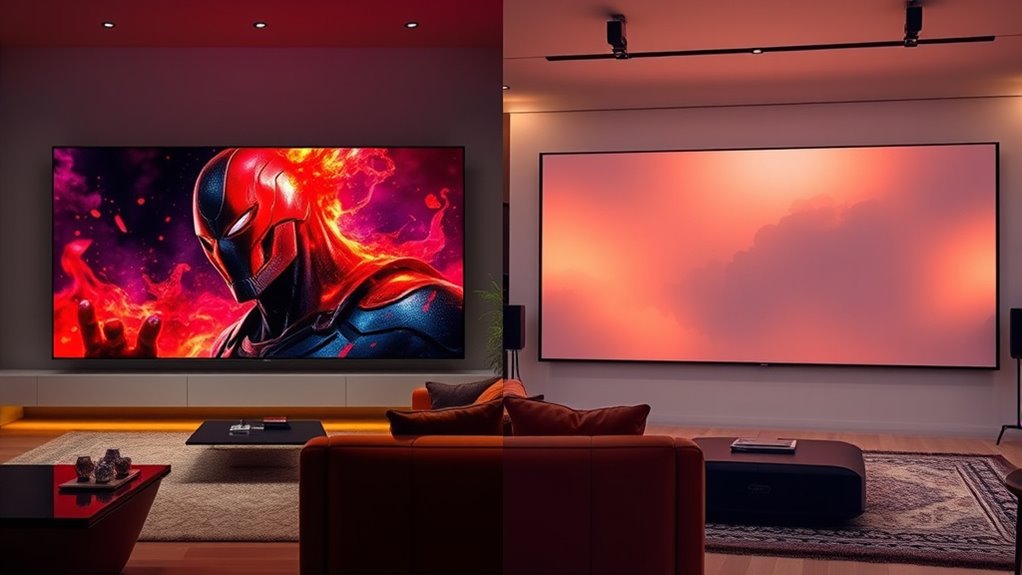
When choosing between an OLED TV and a projector, understanding their key differences can help you make the best decision for your viewing space. Both options offer impressive cinematic experiences, but they excel in different areas depending on your priorities. OLED TVs deliver stunning picture quality with vibrant colors, deep blacks, and sharp contrast in a compact, ready-to-use package. They’re ideal if you want a straightforward setup, excellent picture quality, and a device that works well in various lighting conditions. OLED TVs are known for their self-emissive pixels, meaning each pixel produces its own light. This results in perfect black levels and infinite contrast ratios, which markedly enhance image depth and realism. You’ll notice details in shadows and highlights more vividly, giving movies and shows a more lifelike appearance. Additionally, OLED screens boast vibrant, accurate colors and wide viewing angles, so everyone in the room gets a consistent picture, no matter where they sit. Their sleek design and minimal bezels also make them a stylish addition to any room. Since OLEDs are designed for indoor use and perform well under typical lighting, you don’t need to worry about controlling ambient light to enjoy clear images. Furthermore, OLED technology is recognized for its superior image quality, making it a popular choice for discerning viewers. Continuous advancements in OLED panel technology further improve brightness and durability, ensuring a long-lasting viewing experience.
Choosing between OLED TVs and projectors depends on your space, budget, and viewing preferences.
Projectors, however, require a darker environment to truly shine. They work by projecting images onto a screen or wall, creating a much larger display area than most TVs. If you’re aiming for a home theater, a projector can offer a cinematic scale that’s hard to match with a TV. Modern projectors can produce 100 inches or more with good resolution, immersing you in the content. But because projectors rely on external light sources, ambient light can wash out the picture, making a dedicated dark room preferable. The quality of the image depends on the projector’s resolution, brightness, and lens quality. If you invest in a high-end model, you’ll get crisp details and vibrant colors, but it may come with a higher initial cost and more setup effort, including screen placement, keystone adjustments, and sound considerations. Many projectors also feature advanced image processing, which enhances picture clarity and color accuracy even in challenging conditions.
Ultimately, your choice hinges on your space, budget, and viewing preferences. If you want a simple, high-quality solution for everyday viewing, an OLED TV offers convenience and excellent picture quality. If you’re after a massive, theater-like experience and don’t mind managing lighting conditions, a projector can deliver unparalleled immersion. Both can create stunning cinematic moments; it just depends on what fits your lifestyle best.
Frequently Asked Questions
Which Option Offers Better Color Accuracy for Gaming?
You’re wondering which offers better color accuracy for gaming. OLED TVs typically provide superior color accuracy because of their ability to display vibrant, true-to-life colors with deep blacks and high contrast. Projectors can also deliver good color, but they often depend on the quality of the projector and ambient lighting. Overall, for precise color, an OLED TV usually gives you a more consistent and immersive gaming experience.
How Do Ambient Light Conditions Affect Each Display Type?
Ambient light particularly affects both display types. For OLED TVs, bright rooms can wash out the vivid colors and contrast, making details harder to see. Projectors, especially in well-lit environments, struggle with image clarity and color accuracy, often requiring dimmer settings or blackout conditions for ideal picture. To get the best cinematic experience, control ambient light levels—dim the lights for projectors and minimize glare for OLED TVs.
What Is the Typical Lifespan of OLED Panels Versus Projectors?
You might wonder about the lifespan of OLED panels compared to projectors. OLED screens typically last around 100,000 hours before significant image degradation occurs, though burn-in can reduce their longevity. Projectors, depending on bulb quality, usually last between 2,000 to 5,000 hours, but LED or laser projectors can last up to 20,000 hours. Your choice depends on how long you want your display to stay vibrant and clear.
Are There Budget-Friendly Alternatives That Combine Features?
Did you know some budget-friendly projectors offer 4K resolution at under $500? You can find options that combine good picture quality with affordability, making cinematic experiences more accessible. These models often feature contrast ratios and brightness levels suitable for dark rooms and casual viewing. If you want a versatile, cost-effective setup without sacrificing too much quality, exploring these projectors lets you enjoy a theater-like experience on a budget.
How Do Sound Quality Differences Impact Overall Viewing Experience?
Sound quality plays a vital role in your viewing experience, whether you’re watching on an OLED TV or a projector. Poor audio can distract from stunning visuals, making scenes less immersive. If your device’s speakers are lacking, consider investing in a good soundbar or home theater system. Clear, rich sound enhances dialogue, effects, and music, giving you a fuller, more engaging cinematic experience that complements your chosen display.
Conclusion
Ultimately, whether you choose an OLED TV or a projector, it’s like picking between a vivid, crystal-clear painting and a grand, immersive theater. An OLED offers sharp, vibrant details that dance before your eyes, while a projector transforms your space into a sprawling cinematic universe. Whichever path you take, you’ll be crafting your own personal movie palace—where every viewing feels like stepping into a world of endless stories, waiting just for you to press play.
Hello, I’m Art, and I’m excited to be a part of the 1Home Theatre Projector team. As a writer, I’m here to contribute my knowledge and insights to help you achieve the ultimate home cinema experience. I understand that making decisions in the world of home entertainment can be complex, and I’m here to simplify the process for you.
